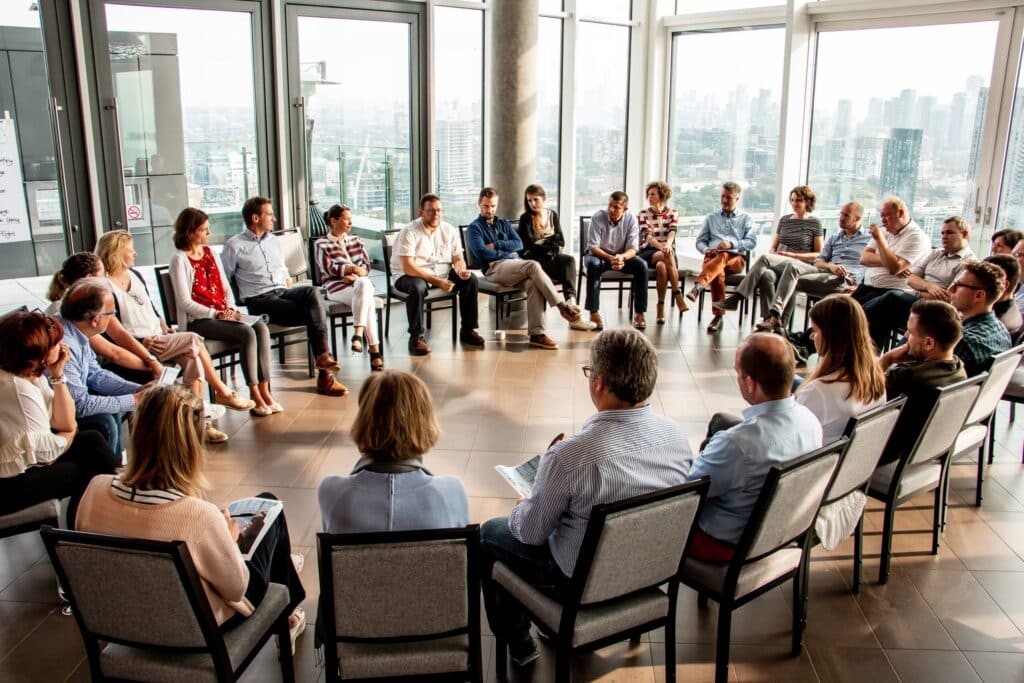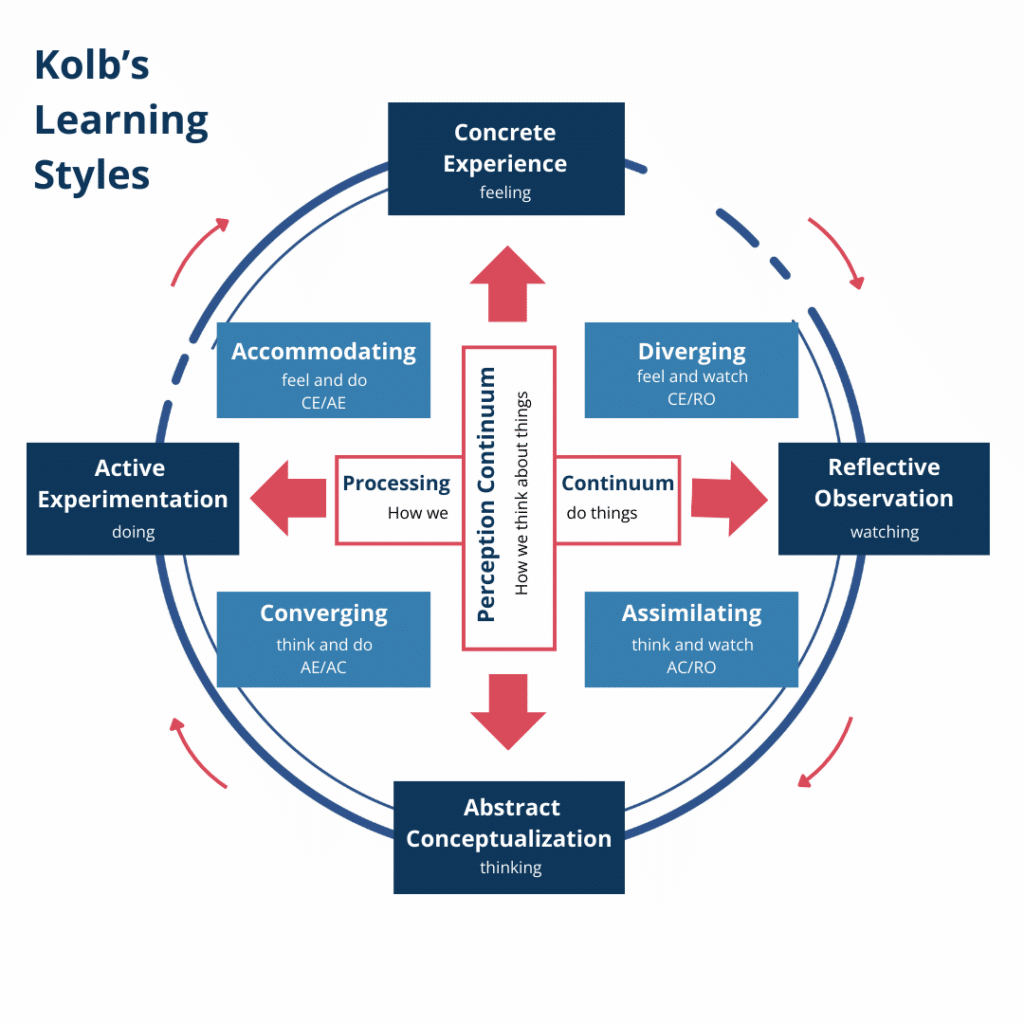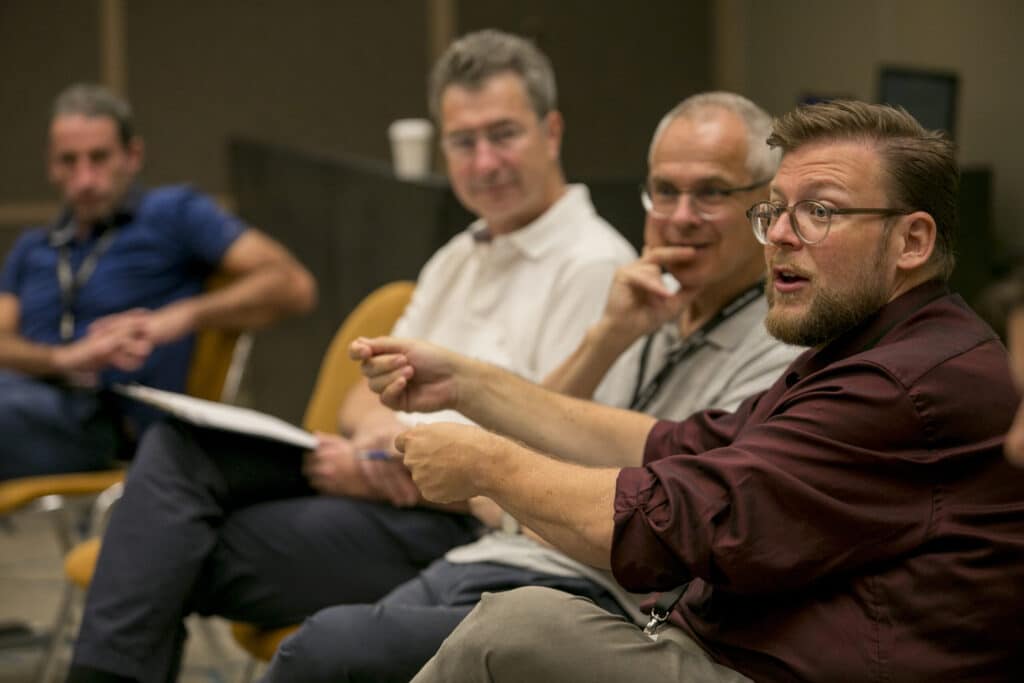Top 6 Tips and Tricks to be an Efficient and Impactful Facilitator in a Learning Experience

The art of facilitation requires a delicate balance between expertise and approachability. An effective facilitator not only guides learners through educational content but also creates an engaging environment that connects theory with practical application. This balance is essential for fostering transformative experiences that drive meaningful organizational growth.
David Kolb’s Experiential Learning Cycle provides a foundational framework for Experiential Learning formats. The cycle comprises four stages: Concrete Experience, Reflective Observation, Abstract Conceptualization, and Active Experimentation. Learning Expeditions, a WDHB-specific learning solution based upon this cycle, promotes collaborative and insightful journeys, enhancing knowledge acquisition through direct engagement and leading to actionable outcomes. As facilitators navigate this framework, their pivotal role becomes apparent, bridging educational concepts with real-world applications in a dynamic and effective manner.
How do facilitators strike this balance in a Learning Experience? We recently spoke with Dick Richardson, a skilled and seasoned facilitator involved in WDHB’s learning programs, to gather insights for other facilitators aiming to enhance their efficiency. Dick is an expert in leadership development and organizational effectiveness, with a notable background that includes leading learning initiatives at IBM and facilitating several of our Apollo Leadership Experiences.
The tips provided here are not exhaustive, as facilitators typically cultivate a unique style influenced by their personalities, backgrounds and experiences. Facilitation plays a vital role in various settings, including collaborative workshops, design sprints and team building sessions. However, this guide specifically focuses on learning experiences, which may encompass all of the aforementioned activities. We hope these tips prove beneficial for those looking to enhance their effectiveness as learning experience facilitators.
Our Top 6 Tips and Tricks For Facilitating a Learning Experience
1.) Foster Inclusive Learning Spaces
In many learning environments, the diversity of participants can be vast. They may hail from different parts of the world, bring varied cultural backgrounds and hold unique professional experiences, all influencing their perspectives on life. As a facilitator, it’s imperative to create an environment where each participant feels valued and empowered to contribute. As Dick points out, “Everyone has something to learn and something to teach,” and facilitators must “…create spaces where this reciprocal learning can flourish.”
To truly leverage this diversity, facilitators need to cultivate an inclusive learning space that helps individuals feel part of a unified community of learners. This endeavor requires active listening and, consequently, a heightened level of cultural awareness. Active listening involves more than just hearing words; it requires full engagement and an effort to understand the underlying emotions and intentions of the speaker.
Cultural awareness, on the other hand, isn’t a skill that can be 100% learned through theory. It comes from exposure to diversity and deep knowledge of cultural dimensions in communication, interpersonal relationships and learning. Facilitators can use the GLOBE study website to explore these dimensions and better understand how national cultures impact people. Facilitators can also compare the GLOBE insights to their own life experiences (living abroad, being part of diverse communities, traveling, etc).
2.) Encourage Active Participation
Active engagement is essential for fostering meaningful learning experiences. Facilitators must encourage participants not merely to receive information passively but to contribute actively to the learning process. Dick emphasizes the transformative impact of this approach: “the magic happens when participants are not just passive recipients but active contributors to the conversation.” To achieve this, he recommends using techniques such as open-ended questions and interactive activities that stimulate participation and discussion. This approach promotes a dynamic dialogue where, according to Dick, “learners are co-creators of knowledge.”
3.) Adapt to Diverse Learning Styles and Leverage Self-Discovery
Everybody learns a bit differently. If we refer again to Kolb Cycle, Kolb identifies 4 different learning styles. First, there are those who like to learn through feeling (experience) and doing (experimentation). Then there are people who like to feel and watch (reflective observation), followed by people who learn by watching and thinking (abstract conceptualization). Finally, there are those who learn by thinking and doing.
Recognizing the variety of learning styles people have is crucial for effective facilitation. As Dick highlighted in his interview, “not everyone learns the same way, and it’s our job to accommodate this diversity in our facilitation strategies.” Adopting a range of different teaching methods can help facilitators meet different learning preferences, ensuring that “…each participant can engage in a way that suits them best.”
A thorough understanding of various learning styles allows facilitators to tailor their approach, addressing the unique ways individuals absorb and process information. Another key element to adapt to diverse learning styles involves guiding participants towards self-discovery. This can include helping the participants identify their own learning styles, preferences and capabilities, often by connecting new insights from the ongoing learning experience to their personal experiences.

4.) Effectively Recognize and Navigate Group Dynamics
Mastering situational and social awareness is arguably one of the most critical soft skills for a facilitator, given that group dynamics can greatly shape the learning environment. Dick underscores the significance of understanding these dynamics: “Every group has its own personality, and understanding this dynamic is key to guiding them effectively.” Being responsive to the group’s energy can help facilitators to adjust facilitation strategies accordingly. As Dick notes,”Sometimes you need to steer, and other times you need to let the group find its own way.”
This delicate balance between directing and allowing autonomy requires a facilitator to perform a nuanced dance of push and pull, stop and go, all while maintaining a high level of finesse and reactivity in real-time. Moreover, facilitators must consistently embrace flexibility. The learning environment is dynamic and unpredictable, and being prepared for the unexpected is crucial. Facilitators who can adapt on the fly often find that they are better equipped to manage the complexities of group interactions, leading to more effective and engaging sessions. For a deeper exploration of this topic, consider reading our article on Facilitation.
5.) Model a Growth Mindset
The mindset a facilitator brings to a session profoundly impacts the learners. “Demonstrating a growth mindset ourselves,” Dick emphasizes, “show[s] that learning is an ongoing journey.” By sharing personal stories of learning and overcoming challenges, facilitators model a growth mindset that can inspire participants to approach learning with openness and curiosity.
Incorporating personal anecdotes that highlight lessons learned and how these experiences have contributed to personal growth can be particularly effective. These stories not only make the learning process relatable but also demonstrate the value of continuous improvement and resilience. Moreover, by openly discussing their own learning paths, facilitators effectively showcase the kind of engagement and adaptability they expect from their participants.
6.) Don’t Forget Practical Application
According to Dick, “The true test of any learning experience is its applicability in the real world.” He advocates for a practical approach, urging facilitators to “…bridge theory with practice, making sure participants can see how what they’re learning fits into their work and life.”
This integration of learning with day-to-day activities and broader life goals is often facilitated through debriefing and synthesis sessions. These sessions are critical as they help crystallize the learning by translating abstract concepts into concrete, actionable steps. Facilitators play a key role in guiding participants to not only understand but also articulate clear, achievable goals based on the session’s outcomes. By focusing on the practical application of learning concepts, facilitators ensure that participants leave with not just new knowledge but a clear path to implementation in their professional and personal lives.
Conclusion
As we wrap up our exploration of effective facilitation in experiential learning, remember that the journey of a facilitator is as dynamic and evolving as the learning sessions they lead. Each of the strategies we’ve discussed—from fostering inclusive spaces to modeling a growth mindset—serves to enhance the learning experience and ensure it resonates on a deeper level with all participants. With these techniques and a spirit of continuous improvement, you’ll be equipped to turn your willing participants into proactive lifelong learners.
Author
Subscribe to get Access to Exclusive Content





